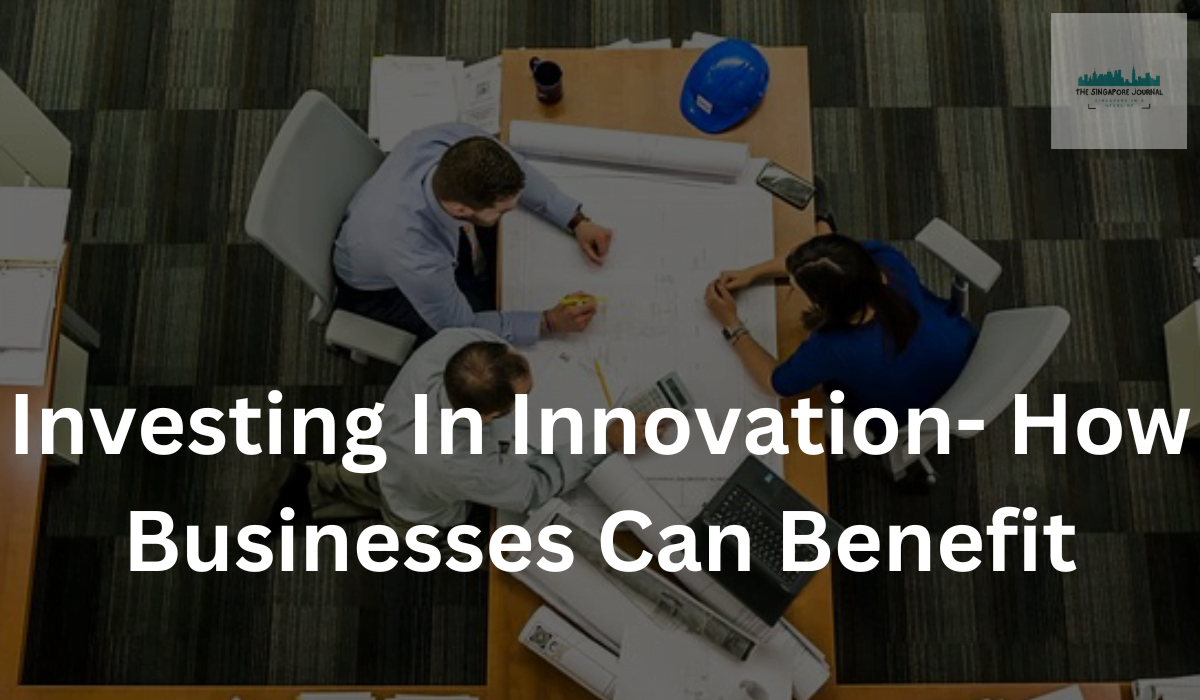Investing in innovation can have significant benefits for businesses in various industries. Studies show a tangible link between investment in innovation and profitability and growth. Investing in innovation includes research and development, leading to long-term commercial benefits, productivity, efficiency, and competitiveness, ultimately resulting in increased sales.
Besides, there is a frequent misconception that innovation equals research and development, but innovation is much more than that. It can include changes to products and processes, introducing new business models, organizational changes, or selling in new markets.
Innovation can drive growth, improve efficiency, and increase profitability. In this blog post, we will show how businesses can benefit from investing in innovation and the steps they can take.
What is Innovation?
Innovation is developing new ideas, products, or services that provide value to customers. It is the engine of economic growth and the key to creating a competitive advantage. Innovations can be incremental, meaning they improve on existing products or services, or they can be disruptive, meaning they make new markets and change how we do things.
How innovation works for businesses

1. Increased Revenue
Investing in innovation can lead to increased revenue for businesses. Innovations can create new markets, expand existing markets, and increase market share. Companies can tap into unique customer needs and create new revenue streams by introducing new products or services. Additionally, businesses can charge premium prices for innovative products or services, leading to higher profit margins.
2. Improved Efficiency
Investing in innovation can improve efficiency for businesses. New technologies and processes can streamline operations and reduce costs. This can lead to higher profitability and a more competitive cost structure.
3. Competitive Advantage
Innovation can provide businesses with a competitive advantage. Companies can differentiate themselves in the marketplace by developing new products or services that meet customer needs better than their competitors. This can lead to increased market share and higher profits.
4. Attracting and Retaining Talent
Innovation can also help businesses attract and retain top talent. By investing in new technologies and processes; companies can offer employees opportunities for professional growth and development. Additionally, being associated with innovative products or services can be a strong draw for employees looking to work for companies pushing the boundaries of their industry.
5. Increased brand value
Investing in innovation can also increase brand value for businesses. Innovative products or services can create a positive image for businesses, increasing brand loyalty and customer retention. Additionally, being associated with innovation can enhance a company’s reputation and create a perception of being a thought leader in their industry.
How to come up with innovative ideas
Generating ideas is essential for businesses to survive and thrive. As change accelerates in markets and technology, entrepreneurs must continually innovate to compete, grow and remain relevant for their customers.
1. Identify Opportunities
The first step in investing in innovation is to identify opportunities. This can be done by conducting market research and identifying customer needs that still need to be met. Businesses can also look to their competitors to see where they are falling short and identify areas where they can differentiate themselves.
2. Set Goals
Once opportunities have been identified, businesses should set goals for their innovation efforts. These goals should be measurable, specific, achievable, relevant, and time-bound (SMART). Examples of goals may include:
- Launching a new product by a particular date.
- Increasing revenue from innovative products by a certain percentage.
- Reducing costs through new processes or technologies.
3. Allocate Resources
Investing in innovation requires resources, including financial resources, time, and talent. Businesses should allocate resources to their innovation efforts based on their goals. This may involve investing in research and development, hiring talent, or acquiring new technologies or processes.
4. Build a Culture of Innovation
To successfully invest in innovation, businesses should build a culture of innovation. This involves creating an environment where employees can suggest new ideas and take risks. Companies should also encourage collaboration and cross-functional teams to foster creativity and innovation.
5. Measure and Evaluate
Finally, businesses should measure and evaluate the success of their innovation efforts. This involves tracking progress against the set goals and making adjustments as needed. Companies should also gather feedback from customers and employees to identify improvement areas and ensure that their innovation efforts meet customer needs.
How to develop innovation skills
Innovation skills are critical for leaders, and their employees must subscribe to an organization’s innovation performance and skills needed to produce new and improved strategies, capabilities, processes, and services.
Five steps to develop innovation skills
1. Take stock of your innovation skills
They advanced a General Innovation Skills Aptitude Test from the Conference Board of Canada’s innovation skills research. Access the GISAT using the link to assess the extent to which you demonstrate the desired innovative skills, the importance of innovation skills to your job Or job function, and the innovation abilities between you and your job function.
2. Know your problem-solving preferences
Humans naturally solve problems using a universal creative process that includes four distinct stages of creative thinking.
- Clarify the challenge
- Generate ideas
- Develop ideas
- Implement ideas to resolve the challenge
3. Use creative problem-solving as a process of innovation
Creative problem-solving provides a framework to help people clarify and understand a challenge, generate ideas to resolve it, then develop the ideas into workable solutions to implement. CPS takes the guesswork out of tackling problems because it guides you through the thinking you need to do, supported by the rules for divergent and convergent thinking and role. It is flexible and explicit, which helps you tackle different problems and situations in any area of your life.
4. Be mindful and deliberate
Mindfulness in innovation is about paying attention to thoughts, emotions, and experiences as they unfold. Being deliberate is about making a disciplined and focused effort to achieve a goal or task while continuously learning to improve at an activity that interests you. Both are critical functioning skills for engaging in innovation.
5. Do, reflect, learn, repeat
The nature of innovation is a creative process. It is a learning process. It pushes us to new places, many of which we must go to without experience. We experiment, learn as we go, and through continuous learning and improvement, that develops our skills. With the learning cycle, you do an activity, reflect on what happened, learn from it, and adapt your next attempt, considering what you have learned. You know, grow, and improve by repeating the learning cycle as you progress.
Conclusion
Investing in innovation can provide significant benefits for businesses in various industries. To successfully invest in innovation, companies must identify opportunities, set goals, allocate resources, build a culture of innovation, and measure and evaluate their progress.
However, investing in innovation has its challenges. It can be costly and time-consuming, and there is always the risk that an innovation effort will fail. Businesses must carefully weigh the potential benefits against the risks and determine if investing in innovation suits their organization.
Innovation is a crucial driver of economic growth and competitiveness, and businesses that invest in innovation are more likely to thrive in today’s fast-paced and rapidly changing business environment.
Also Read:

